Moving day brings a whirlwind of activity, with furniture, boxes, and appliances constantly on the move. While most people focus on protecting their floors, walls and corners are just as vulnerable to scrapes, dents, and scuffs. Without proper moving wall protection, you could end up with unsightly marks or even costly repairs. Whether you’re moving in or out of a home in Northern Virginia, knowing how to protect your walls, corners, stairwells, and door frames is essential for a smooth, damage-free move.
In the heart of Alexandria, VA, Division 1 Movers are established experts in local and long distance moving. If you have any questions after reading this guide, please reach out.
Why Wall Protection Matters During a Move
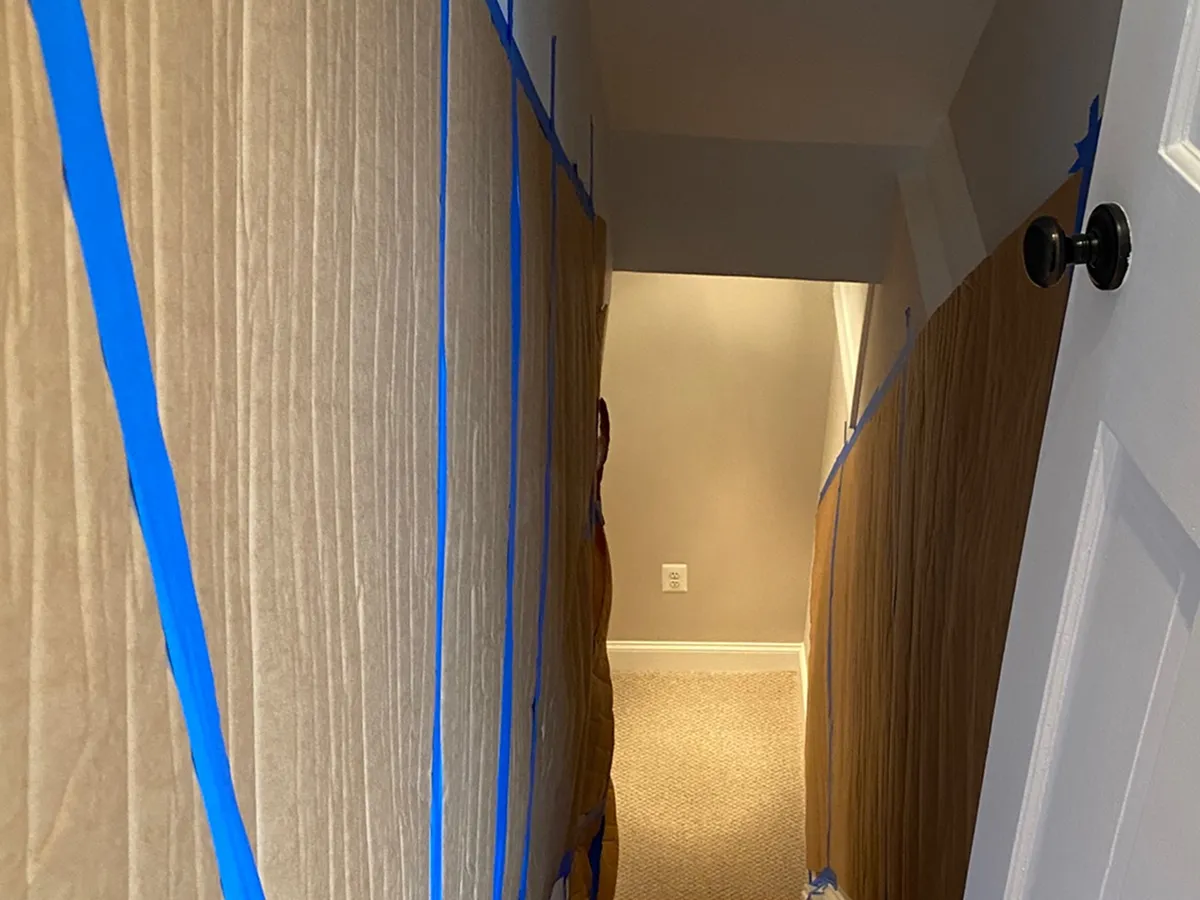
Preventing Damage to Your Home’s Value
Walls, corners, and door frames are high-contact areas during a move. Even a single misstep can leave behind scratches, gouges, or chipped paint. These blemishes not only affect your home’s appearance but can also impact its value, especially if you’re preparing to sell or rent.
Reducing Stress and Saving Time
Scrambling to repair wall damage after a move adds unnecessary stress and delays your settling-in process. By taking proactive steps to protect your walls, you can focus on enjoying your new space instead of patching up dings and dents.
Essential Supplies for Moving Wall Protection
Moving Blankets and Pads: The First Line of Defense
Moving blankets and thick pads are among the most effective tools for protecting walls and corners. These materials absorb impact and prevent direct contact between your furniture and the wall surface. At Division 1 Movers, we provide high-quality moving blankets and pads for every job, ensuring your home is protected from start to finish.
- Moving Blankets: Drape these over large furniture pieces or tape them to walls in tight spaces. They’re especially useful for stairwells and narrow hallways where bumps are more likely.
- Corner Protectors: Foam or plastic corner guards can be temporarily attached to wall corners. These absorb impact and prevent chipping or denting, which is common when maneuvering bulky items.
- Painters Tape: Use painter’s tape to secure blankets or pads to walls and corners. It’s gentle on paint and easy to remove after the move.
Cardboard and Foam Sheets: Flexible Wall Shields
Cardboard and foam sheets are versatile, lightweight, and easy to cut to size. They can be taped to walls, corners, or door frames to create a temporary barrier against scrapes and bumps. This is especially helpful in stairwells or around tight corners where maneuvering is tricky.
- Cardboard Sheets: Flatten and cut cardboard to fit the area you want to protect. Secure with painter’s tape for a quick, effective shield.
- Foam Sheets: Foam offers extra cushioning and is ideal for delicate surfaces or high-impact zones.
Protecting Corners: High-Risk Zones
Why Corners Are Vulnerable
Corners are natural pinch points during a move. Large furniture, mattresses, and appliances often need to be turned or pivoted around corners, increasing the risk of accidental impact. Even experienced movers must take extra care in these areas.
How to Protect Corners Effectively
The best way to protect corners is to use a combination of padding and technique. Foam or plastic corner guards are easy to install and remove, while moving blankets can be wrapped around both the corner and the item being moved. For added security, secure the padding with painter’s tape.
- Install Corner Guards: Place foam or plastic guards on all exposed corners along your moving path. These are especially important in hallways and stairwells.
- Wrap Furniture Edges: Use moving blankets or bubble wrap on the edges of furniture to soften any accidental contact with corners.
- Move Slowly and Steadily: Take your time when navigating corners. Assign a spotter to guide the process and prevent sudden movements.
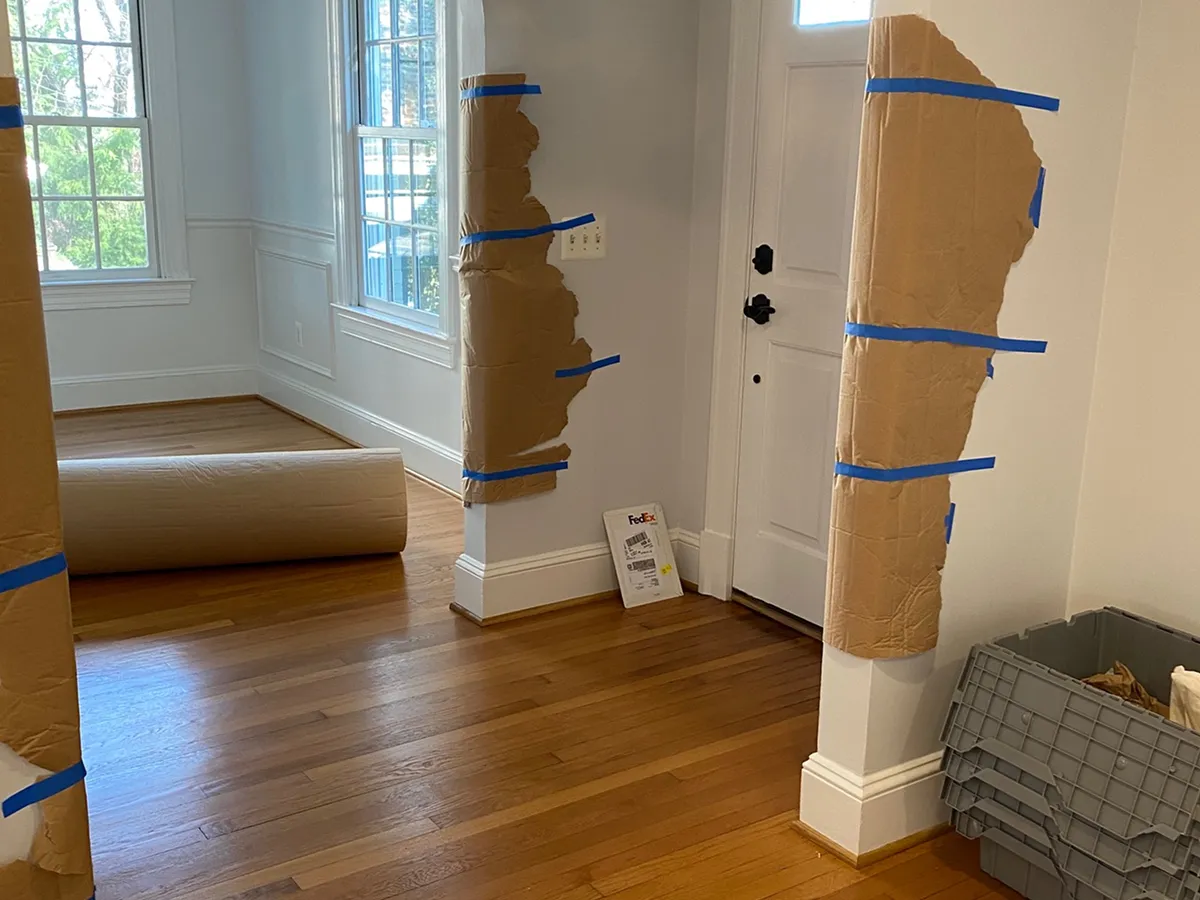
Techniques for Moving Around Corners Without Damage
Planning the Route
Before you start moving, map out the best route for each large item. Measure doorways, hallways, and corners to ensure your furniture will fit. Remove obstacles and open doors fully to create as much space as possible.
Teamwork and Communication
Moving around corners is a two-person job at minimum. One person should guide the item from the front, while another supports and steers from behind. Clear communication is key to avoiding sudden bumps or scrapes.
Key Techniques for Navigating Corners
- Lift and Angle: Tilt furniture at an angle to reduce its footprint and make it easier to pivot around corners. Lifting items slightly off the ground also prevents dragging and accidental wall contact.
- Use Sliders or Dollies: Furniture sliders and dollies make it easier to maneuver heavy items with precision, reducing the risk of losing control and hitting the wall.
- Protective Padding: Always keep a layer of padding between the item and the wall, especially when making tight turns.
Protecting Walls in Stairwells
Unique Challenges of Stairwell Moves
Stairwells are among the most challenging areas to protect during a move. The combination of narrow spaces, sharp turns, and elevation changes increases the risk of wall and railing damage. Large items like mattresses, couches, and appliances are particularly difficult to maneuver in these spaces.
Best Practices for Stairwell Wall Protection
To protect stairwell walls, use a combination of moving blankets, foam sheets, and careful technique. Secure padding along the entire length of the stairwell, focusing on turns and landings where impacts are most likely.
- Line the Walls: Attach moving blankets or foam sheets to the stairwell walls using painter’s tape. Overlap the padding for full coverage.
- Protect Railings: Wrap railings with blankets or bubble wrap to prevent scratches and dents.
- Assign a Spotter: Have one person guide the item from above and another from below, ensuring steady movement and clear communication.
Protecting Door Frames: Entry and Exit Points
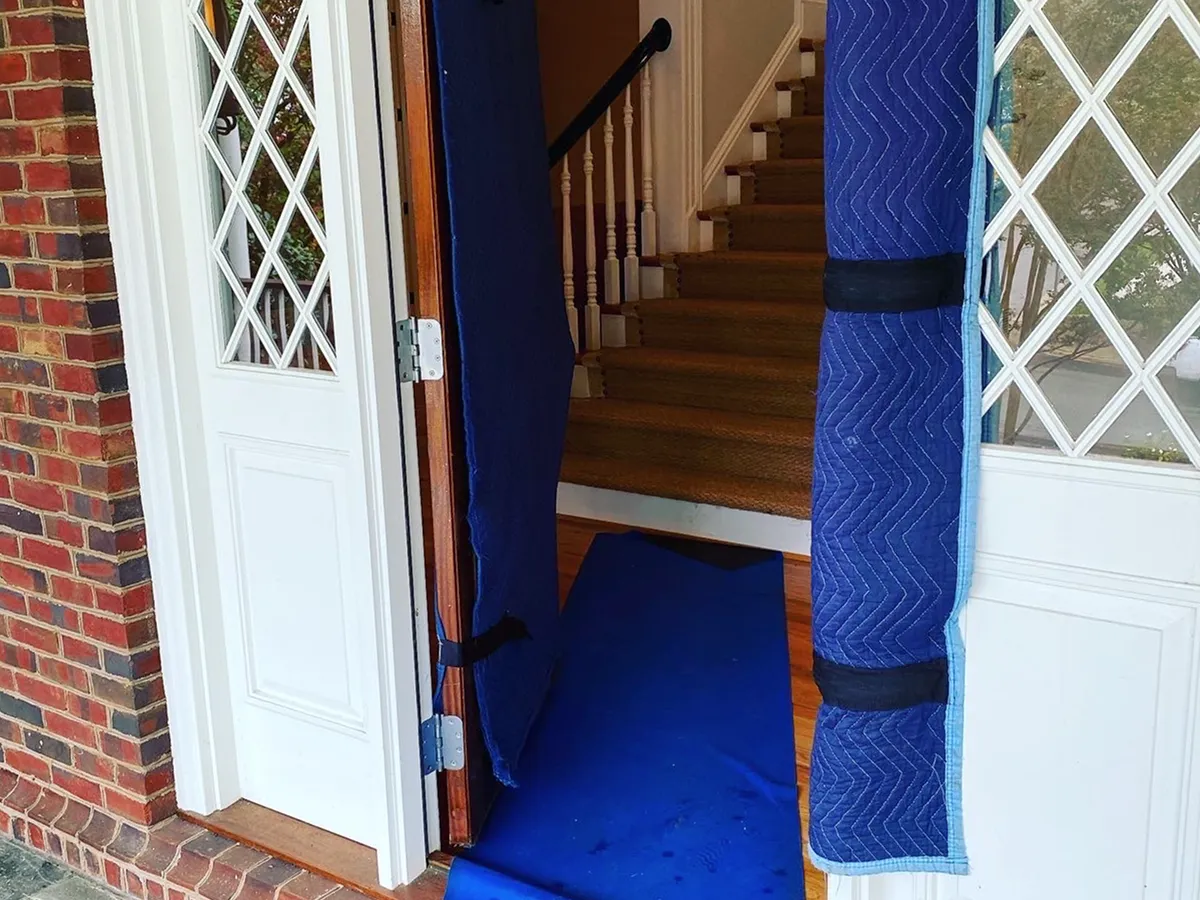
Why Door Frames Are at Risk
Door frames are frequent contact points during a move, especially when moving large or awkwardly shaped items. Even a slight miscalculation can result in chipped paint, dents, or splintered wood.
How to Shield Door Frames
The best way to protect door frames is to pad them thoroughly and move items through at the correct angle. Foam tubing, moving blankets, and cardboard can all be used to create a buffer.
- Foam Tubing: Cut foam pipe insulation to size and slip it over the edges of the door frame. This provides a soft, shock-absorbing barrier.
- Cardboard Wraps: Tape flattened cardboard around the frame for added protection.
- Blanket Padding: Drape a moving blanket over the top and sides of the frame, securing it with painter’s tape.
Professional Movers: The Smart Choice for Wall Protection
Division 1 Movers’ Approach to Wall Protection
At Division 1 Movers, we understand that protecting your home is just as important as moving your belongings. Our team comes equipped with all the necessary supplies—moving blankets, corner guards, foam sheets, and painter’s tape—to ensure every wall, corner, and door frame is shielded from harm.
- Expert Techniques: Our movers are trained in the safest, most efficient ways to maneuver furniture around tight corners, up stairwells, and through doorways without causing damage.
- Customized Protection Plans: We assess your home’s layout and create a tailored protection strategy for every move.
- Attention to Detail: From the first box to the last piece of furniture, we treat your home with the utmost care and respect.
DIY Wall Protection Tips for Moving Day
Prepare in Advance
Don’t wait until moving day to start thinking about wall protection. Gather your supplies ahead of time and pad all high-risk areas before the first item is moved. Walk through your home and identify tight spots, sharp corners, and narrow doorways that need extra attention.
Use the Right Materials
Choose materials that are easy to install and remove, such as painter’s tape, foam sheets, and moving blankets. Avoid using duct tape or adhesives that could damage paint or finishes.
Move Slowly and Carefully
Rushing increases the risk of accidents. Take your time, communicate with your team, and use spotters to guide large items through tricky areas.
Common Mistakes to Avoid When Protecting Walls
Skipping Padding in Tight Spaces
It’s tempting to skip padding in areas that seem easy to navigate, but tight spaces are where most damage occurs. Always pad corners, stairwells, and door frames, even if you think you can clear them easily.
Using the Wrong Tape
Never use strong adhesives or duct tape directly on painted walls or woodwork. These can peel paint or leave behind sticky residue. Stick to painter’s tape for all temporary installations.
Underestimating Large Items
Large, heavy, or awkwardly shaped items are the most likely to cause wall damage. Plan your route, use extra padding, and enlist help to move these items safely.
Frequently Asked Questions About Moving Wall Protection
Can I use bubble wrap to protect walls?
Bubble wrap can provide some cushioning, but it’s best used for wrapping furniture and fragile items. For wall protection, moving blankets, foam sheets, or cardboard offer better coverage and impact absorption.
How do I protect walls in a rental property?
Use non-damaging materials like painter’s tape and foam sheets to avoid risking your security deposit. Take photos before and after the move to document the condition of the walls.
What if I accidentally damage a wall during the move?
If damage occurs, document it immediately and notify your moving company. Professional movers like Division 1 Movers are insured and can help address any issues that arise.
Choose Division 1 Movers for Expert Wall Protection in Northern Virginia
Protecting your walls, corners, stairwells, and door frames is a crucial part of a successful move. With the right supplies, careful planning, and expert techniques, you can avoid costly repairs and keep your home looking its best. Division 1 Movers brings years of experience, professional-grade materials, and a commitment to careful, respectful service to every move in Alexandria and throughout Northern Virginia.
If you want peace of mind and a damage-free move, trust Division 1 Movers to handle every detail, including wall protection. Contact us today for a free quote or to learn more about our moving services. Let us help you move safely and confidently into your new home!
%201.webp)
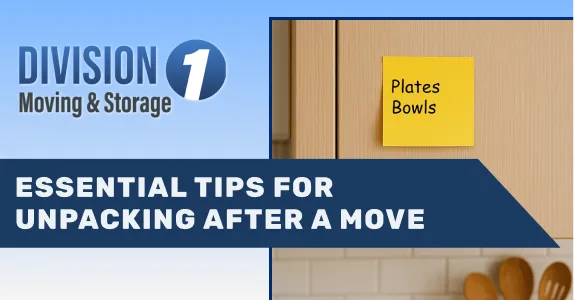




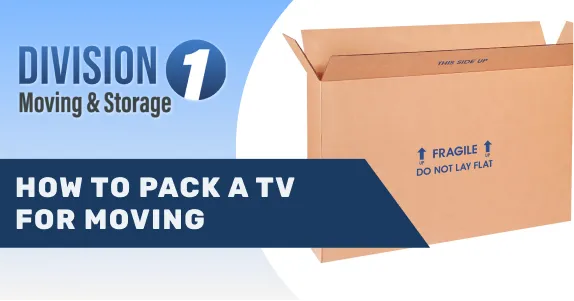
.webp)
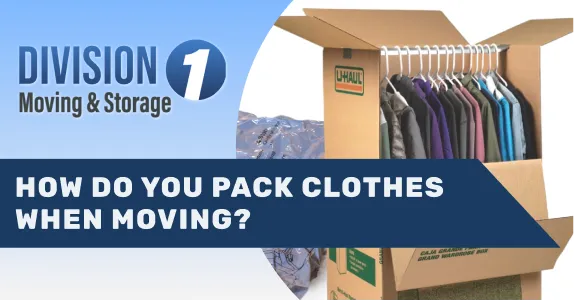
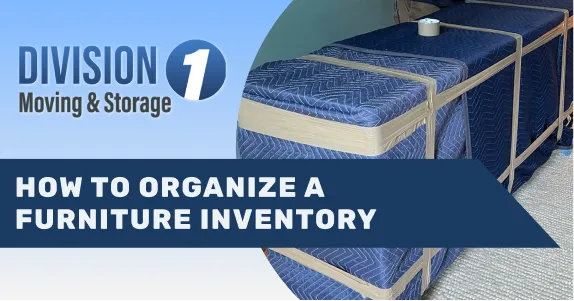
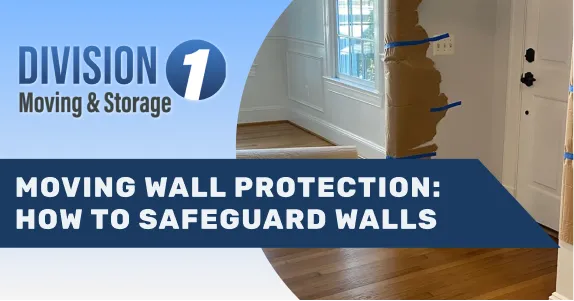
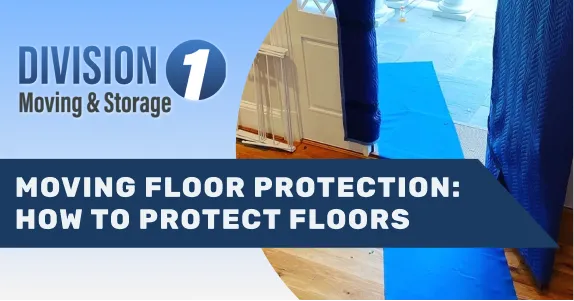



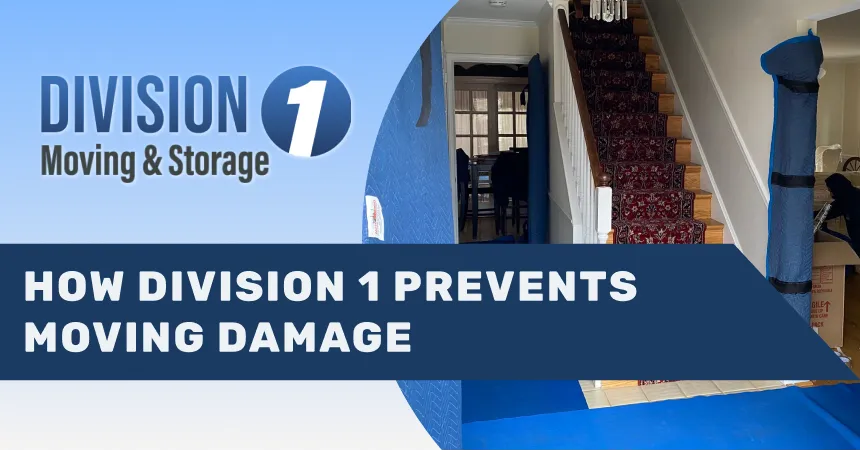



















.webp)



